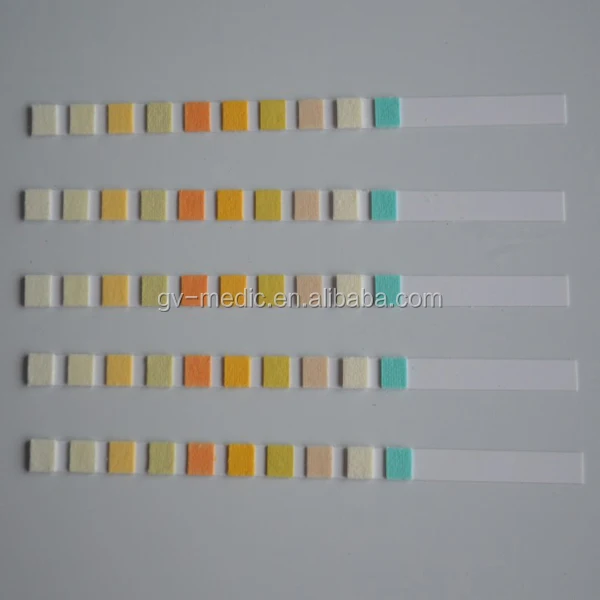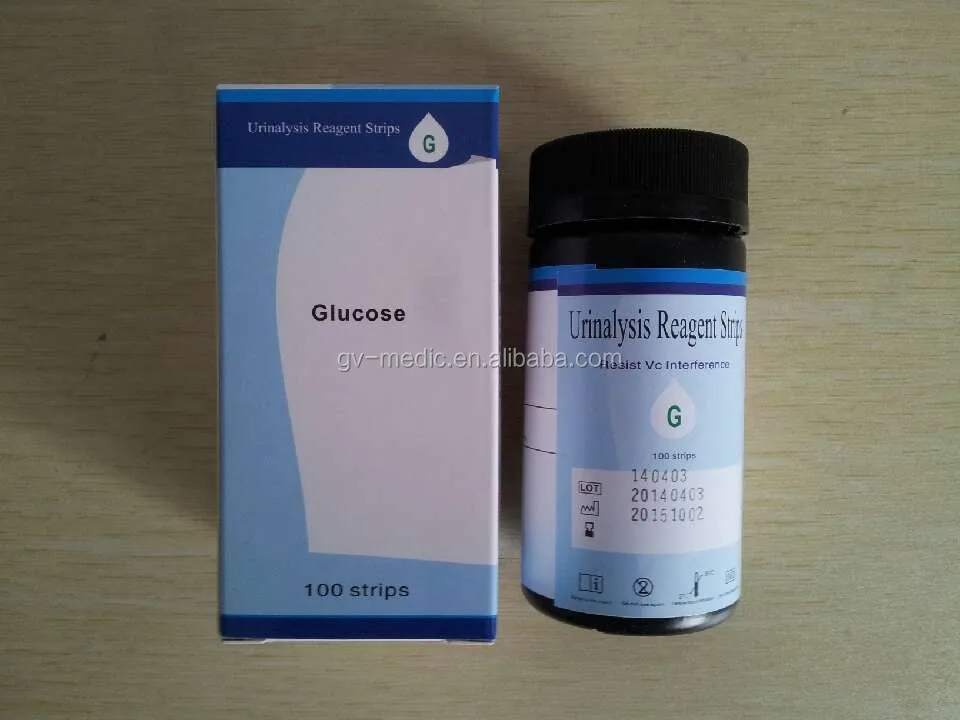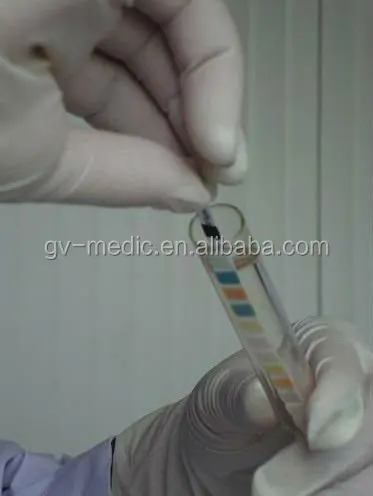Flexible:Available in up to 12 parameters
Urine Strip for Urinalysis are firm plastic strip to which several different reagent area are affixed. Urine Strip are packaged along with a drying agent in a plastic bottle with a twist-off cap. Each strip is stable and ready to use upon removal from the bottle. The entire reagent strip is disposable. Results are obtained by direct comparison of the test strip with the color blocks printed on the bottle label. Please refer to the outside box and bottle label for the specific test parameters of the product you are using
A urine test strip is a basic diagnostic instrument used to determine pathological changes in the urine in standard urinalysis. A standard urine test strip may comprise of up to 12 different chemical pads or reagents which react (change color) when immersed in, and then removed from, a urine sample. The test can be read between 60 and 120 seconds after dipping. Routine testing of the urine with multiparameter strips is the first step in the diagnosis of a wide range of diseases
Visual Reading Technique:
- Hold the strip up horizontally and compare the result shown on the strip with the color chart on the canister label closely and carefully. Take note of the result. For a semi-quantitative result, take down the results according to the time specified on the color chart. The pH and Protein can be read at any time within 60 seconds after dipping. For a qualitative result, the strip should be read 1-2 minute after dipping. If a positive result is obtained, repeat the test and compare with color chart at the time specified. Color changes beyond 2 minutes are of no diagnostic value.
Our factory produces with a competitive price. The relevant quotation and samples will be sent upon request
Dip the test strip for about 1 second into the fresh urine specimen

Wipe off any excess urine on the rim of the vessel and blot the edge of the test strip on tissue paper

Testing Items: Protein,Glucose
- Glucose
This test is based on a sequential enzyme reaction. First, glucose oxidase catalyzes the formation of gluconic acid and hydrogen peroxide from the oxidation of glucose. A second enzyme, peroxidase, catalyzes the reaction of hydrogen peroxide with potassium iodide chromogen to oxidize the chromogen to colors ranging from blue through greenish-brown, and brown to dark-brown.
Reactivity of the test decreases as the specific gravity and/or pH of urine increases, and may also vary with temperature. Ascorbic acid (more than 50 mg/dl) and ketone bodies (more than 40 mg/dl) may cause a false negative result for a specimen containing a small amount of glucose (100 mg/dl). However, the combinations of such ketone levels and low glucose levels are metabolically improbable. - Protein
This test is based on the color change of the indicator tetrabromophenol blue. A positive reaction is indicated by a color change from yellow through green and then to greenish-blue.
The minimum sensitivity of this test is 10 mg/dl of protein in urine. Highly buffered alkaline urines (pH 9) may give false negative results. The interpretation of results is also difficult in turbid urine specimens.
Read the result by comparing the test fields with the color scale on the test pack after 30 to 60 seconds
VISUAL READING TECHNIQUE:
- Immerse all reagent areas in specimen and remove strip immediately.
- Run edge of strip against the rim of the container to remove excess urine.
- Compare test areas closely with colour chart on bottle label or bench reader. Record the results.

Instruction:
- Dip the test patch of a fresh strip into urine sample, or pass strip through urine stream 1 to 2 seconds only.
- Blot excess on a clean paper towel or tissue.
- Results may be compared between 1 minute od exposure to urine(colour changes occuring after 1 minute are of no diagnostic value)

Notes:
- Do not touch test areas of reagent strips.
- Do not use after expiry date
- Do not remove desiccant(s).
- Do not remove strip from the bottle until immediately before it is to be used for testing.
- Replace cap immediately and tightly after removing reagent strip.
- Store at temperature between 2°C-30°C.
- Store only in original bottle.
- The sample should not be more than 4 hours old at the time of testing.
- Collect fresh urine in a clean dry container.






We have more categories for you. lf you can't find the products you want above,just fill in the form and tell us whatproducts you want to import from China.





















